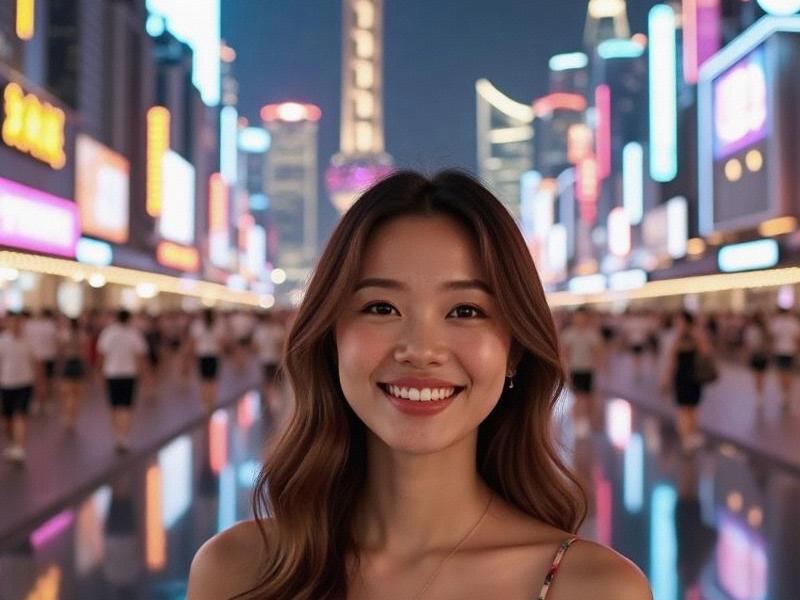This investigative feature explores how Shanghai women are driving China's ¥584 billion beauty industry while navigating complex intersections of tradition, technology, and globalization in their pursuit of aesthetic perfection.

The Shanghai Beauty Paradox: Tradition Meets Hypermodernity
At the newly opened SK-II Future X Smart Store on Nanjing Road, 28-year-old finance executive Li Yuxi undergoes a 15-minute AI skin diagnosis while her grandmother's portrait - wearing 1930s qipao makeup - watches from her phone lock screen. This juxtaposition encapsulates Shanghai's unique beauty landscape where centuries-old rituals coexist with cutting-edge technology.
Three Pillars of Shanghai's Beauty Ecosystem
1. The Skincare Revolution (Market value: ¥287 billion)
- Customization: DNA-based regimens (23% adoption rate)
- Technology: AI complexion analyzers in 68% of luxury malls
- Traditional fusion: Herbal ingredients in high-tech formulations
- Market leaders:
Pechoin's Shanghai 1940s line revival
Estée Lauder's "Shanghai Exclusive" serums
2. Makeup Culture (Annual growth: 14.5%)
- Daytime: "No-makeup makeup" (62% workplace preference)
- Nightlife: Dramatic eyeliner techniques (38% tutorial searches)
- Historical influences:
上海花千坊爱上海 1920s calendar girl aesthetics
1980s bold lip trends
- Emerging trend: "Hanfu makeup" among Gen Z
3. Surgical Enhancement (23,000 procedures/year)
- Most popular:
1. Double eyelid surgery (41%)
2. Rhinoplasty (28%)
3. V-line face shaping (19%)
- Recovery tourism: 58% from other provinces
- Ethical debates: "Natural beauty" movement growth
The Economic Power of Shanghai Beauty
- Livestream beauty sales: ¥5.8 billion/month
- Cosmetic R&D centers: 37 in Pudong alone
- Makeup artist schools: 89 registered institutions
上海品茶网 - Luxury beauty flagship stores: 42 on Huaihai Road
Cultural Contradictions
- Traditional values: 63% still consult lunar calendars for haircuts
- Modern pressures: Workplace appearance requirements lawsuits
- Generational divide:
- Mothers' pearl powder remedies vs daughters' LED masks
- 55+ women spend 23 minutes daily on skincare vs 94 minutes for 18-25s
Digital Transformation
Tech Innovations:
- Virtual try-on apps (78% penetration)
- Blockchain authenticity verification
- AR makeup tutorial platforms
- Smart mirrors in 92% of high-end salons
爱上海
The Human Cost
Psychological Impacts:
- "Face anxiety" among university students (survey: 41% affected)
- Micro-celebrity pressure on influencers
- Cosmetic surgery addiction support groups
- Ageism in beauty standards
Future Directions
Emerging Trends:
- Gender-neutral beauty products (17% market growth)
- Sustainability movement (32% prefer eco-packaging)
- Heritage beauty revival projects
- AI-generated makeup styles
As Shanghai positions itself as Asia's beauty capital, its women continue rewriting the rules - preserving qipao elegance while pioneering digital beauty frontiers. Their choices don't just reflect personal style, but the soul of a city forever balancing its storied past with an ambitious future.